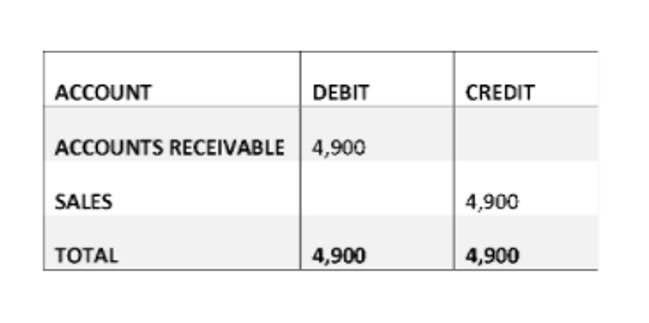
They can, however, impede property transactions by complicating the transfer of ownership and potentially reducing market value. Addressing liens promptly and understanding their terms is vital for both property owners and prospective buyers. Encumbrance accounting can also play a key role encumbrance accounting example in tracking and managing encumbrance amounts, helping ensure that liabilities do not exceed budgeted funds, thus preventing overspending.
Encumbrance Definition: Understanding Types, Examples, and Impact on Property
- Implementing AP automation software can significantly help companies sync data for accurate encumbrance accounting and gain control over their finances.
- This practice allows for the timely identification of discrepancies, such as over-encumbrances or instances where encumbrances should have been reversed but were not.
- You can also carry forward budget amounts equal to encumbrances and/or funds available.
- Money from the encumbrance account is moved into the appropriate account to pay the invoice, and accounts payable handles the vendor payment.
- Easements can significantly impact the transferability and value of a property, as their presence might influence a prospective buyer’s decision to purchase or negotiate the terms of the sale.
- Stabilization funds can be classified as either restricted or committed fund balance if they meet the criteria previously discussed.
This process ensures that budgetary resources are accurately tracked and managed, maintaining financial control and accountability. An encumbrance can impact the transferability of the property and restrict its free use until the encumbrance is lifted. The most common types of encumbrance apply to real estate; these include mortgages, easements, and property tax liens. Not all forms of encumbrance are financial, easements being an example of non-financial encumbrances. Understanding the encumbrance definition in accounting is essential for organizations that need to tightly manage budgets and financial obligations. By distinguishing between planned and actual expenditures, encumbrance accounting provides a clear financial picture and helps maintain fiscal discipline.

The Importance of Emergency Funds and How to Build Yours
For example, if a contractor made adjustments to your property that were never paid for, the contractor might establish a lien. A lease is an agreement whereby someone rents a property for an agreed-upon rate and period of time. It is a form of encumbrance by which the lessor (landlord) does not give up title to the property, but their use of the property is significantly constrained by the lease agreement.

Is encumbrance accounting right for your organization?
The £500,000 is now committed and set aside within the budget specifically for road maintenance purposes only. However, in the accounting ledger, the entire £500,000 is recorded as an encumbrance. After these entries, the remaining $4,000 of the purchase order remains encumbered, and the budgetary balance will reflect that $6,000 has been expended. After the vendor accepts the purchase order and delivers the goods or services, the purchasing organization becomes liable to make the payment. Contract and Grant Cost Share Encumbrances are created for purchase orders that are cost-share funded and coded with balance type code CE. A non-encumbrance certificate is a legal document which states that the underlying property is free from any legal obligations.

Encroachments can affect property value and usability, as they often complicate legal descriptions and may require alterations or compensation. They can also hinder the sale or redevelopment of affected properties unless addressed properly. In some cases, long-standing encroachments might even lead to claims of adverse possession, where the encroaching owner can legally acquire the land in question. These agreements facilitate cooperative use of land and resources, sometimes increasing communal efficiency but occasionally limiting development opportunities.
- Because you’ll be purchasing the equipment in the next quarter, you’ll want to set aside or encumber the funds needed to prevent them from being spent elsewhere.
- In accounting, an encumbrance is an open commitment to pay for goods or services ahead of the actual purchase.
- Likewise a government should establish a policy on the order in which unrestricted resources are to be used when any of these amounts are available for expenditure.
- An encumbrance refers to a claim or liability that affects the ownership or value of an asset.
Ensuring that encumbrances are promptly recorded when obligations are made is crucial for maintaining accurate budgetary CARES Act records and preventing budget overruns. This presentation signals that these funds are not available for general use and have been set aside for specific future obligations. In governmental accounting, there is an important distinction between how encumbrances are handled in budgetary accounts versus how liabilities are recognized in financial accounting.
- It is created on the general ledger upon finalization of purchase orders, recurring contracts or pre-encumbrance documents.
- Encumbrances can significantly affect a property’s marketability, influencing both buyer interest and sale conditions.
- When an upcoming commitment or expenditure is identified, it will be posted to these accounts, serving to reserve the required funds until the purchase is complete.
- Legal encumbrances such as easements may limit the types of structures you can build or where you can construct on your land.
- This entry reflects the reduction or elimination of the initial encumbrance, ensuring that the budget accurately reflects the updated commitment or the release of funds in case of cancellation.
- In conclusion, encumbrances are a critical aspect of real estate transactions that can significantly impact both the titleholder’s ability to control their property and the value of the asset itself.
When any of these situations arise, the original encumbrance needs to be adjusted or reversed to reflect the new financial reality. Then, the procuring company QuickBooks ProAdvisor converts the encumbrance into an expenditure by transferring the transacted items from the encumbrance account into accounts payable. Encumbrance accounting is often used as a planning tool for budgetary control, particularly in government organizations using government accounting standards and nonprofits. An encumbrance balance refers to restricted funds that have been set aside for known future expenses of a company.

How to Record Encumbrances
An encumbrance can also restrict the uses to which property can be put, such as zoning laws that limit the types of construction on a plot of land. The standard says that the foundation for the fund should be from a revenue source that is either restricted or committed. That restricted or committed revenue source should be expected to continue to represent a substantial portion of the inflows reported in that fund. For the general fund, unassigned fund balance is the residual classification after amounts have been classified as nonspendable, restricted, committed or assigned.
Each type of encumbrance is meant to protect parties and specify exactly what each claim entails. There are three steps involved in the encumbrance process that directly impact budgeting and financial planning. Companies may elect to use encumbrance accounting for a variety of reasons, including the following.
Accounting Process
Instead, they play a role in budgetary control and are reported in the budgetary comparison schedules, which are often supplementary to the basic financial statements. However, encumbrances indirectly affect the reporting of fund balance in governmental funds, which is a key measure of available resources. In conclusion, encumbrances play a vital role in financial reporting and fund management. By setting aside funds for anticipated obligations, companies can maintain accurate financial statements while ensuring that only the required funds are used for payments. Nevertheless, it is essential to be aware of the limitations that come with encumbrance accounting, such as reduced flexibility when managing cash flows. Encumbrance accounting is a critical tool for managing commitments and ensuring budgetary control.
Leave a Reply